In AppDelegate.m, I configured:
NSURLCache *sharedURLCache = [[NSURLCache alloc] initWithMemoryCapacity:20 * 1024 * 1024 diskCapacity:100 * 1024 * 1024 diskPath:@"FhtHttpCacheDir"];
Then the http request:
- (void) testRestfulAPI{
NSURLSessionConfiguration *config = [NSURLSessionConfiguration defaultSessionConfiguration];
NSURLSession *session = [NSURLSession sessionWithConfiguration:config];
NSMutableURLRequest *request = [[NSMutableURLRequest alloc] initWithURL:[NSURL URLWithString:@"http://192.168.0.223:8000/v1/topictypes"]];
[request setHTTPMethod:@"GET"];
[request setValue:@"application/json" forHTTPHeaderField:@"Accept"];
NSError *error = nil;
if (!error) {
NSURLSessionDataTask *downloadTask = [session dataTaskWithRequest:request completionHandler:^(NSData *data, NSURLResponse *response, NSError *error) {
if (!error) {
NSHTTPURLResponse *httpResp = (NSHTTPURLResponse*) response;
if (httpResp.statusCode == 200) {
NSDictionary* json = [NSJSONSerialization
JSONObjectWithData:data
options:kNilOptions
error:&error];
NSLog(@"JSON: %@", json);
}
}
}];
[downloadTask resume];
}
}
The first time it requests, it got HTTP 200 with Etag + Cache-Control headers. No problem.
If I am not wrong, Cache-Control: must-revalidate, max-age=86400, private will tell NSURLCache to consider the cache as being fresh within 24 hours and will not make any network calls within the next 24 hours.
But it is not the case, the second time the http request is made, it actually sends out If-None-Match headers out and got back HTTP 304.
It appears to me that NSURLCache is partially working. It can cache response, but it does not respect RFC 2616 semantics as Apple doc describes so here. FYI, I did not change the cache policy so it uses the default NSURLRequestUseProtocolCachePolicy.
I googled for more than a day for similar issues and other experienced similar ones but I have not found any solutions. Some asked about the same problem in AFNetworking's github issues but the author closes the issue as it is not directly related to AFNetworking here and here.
Also various related stackoverflow posts did not help me either.


